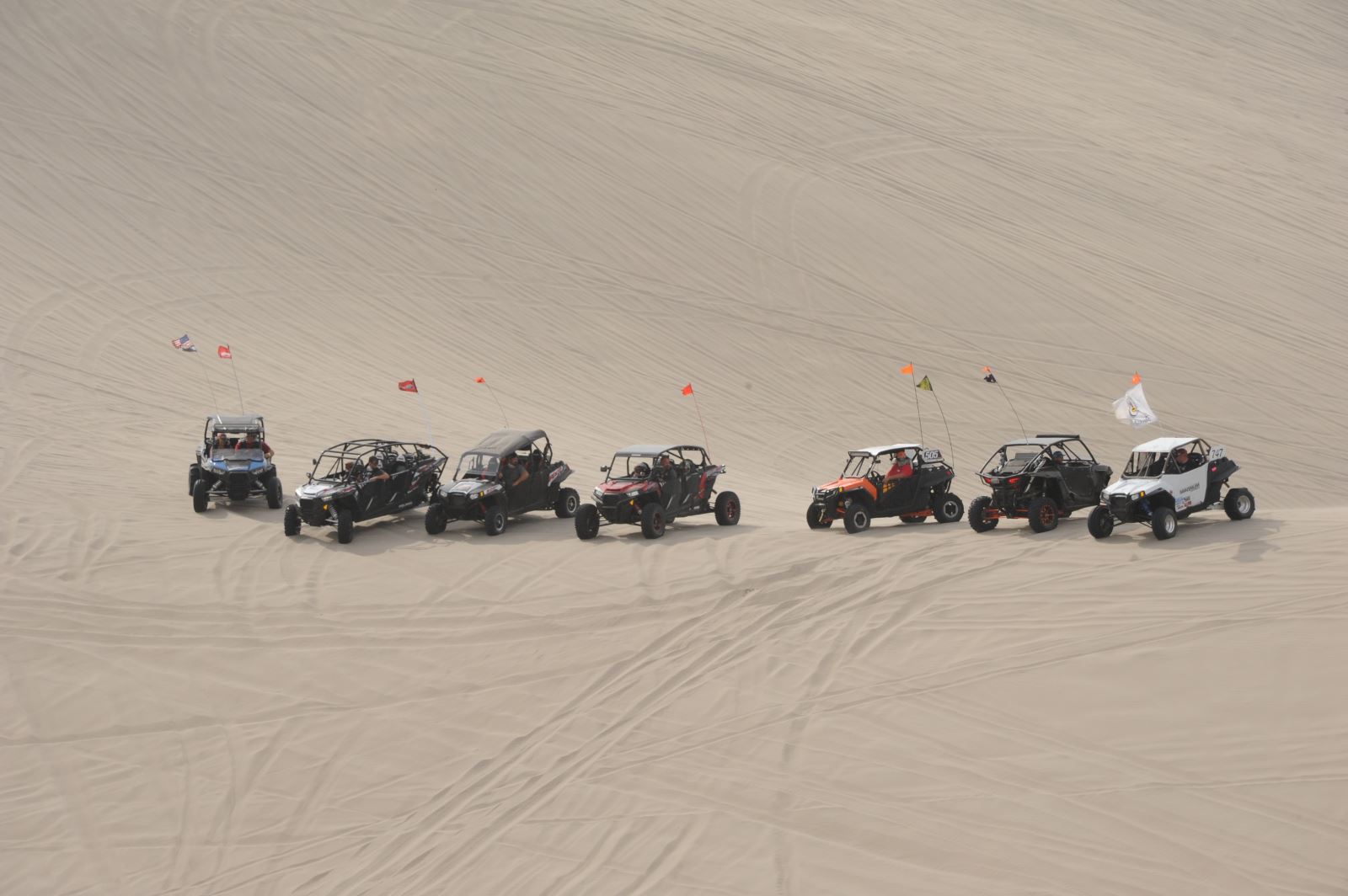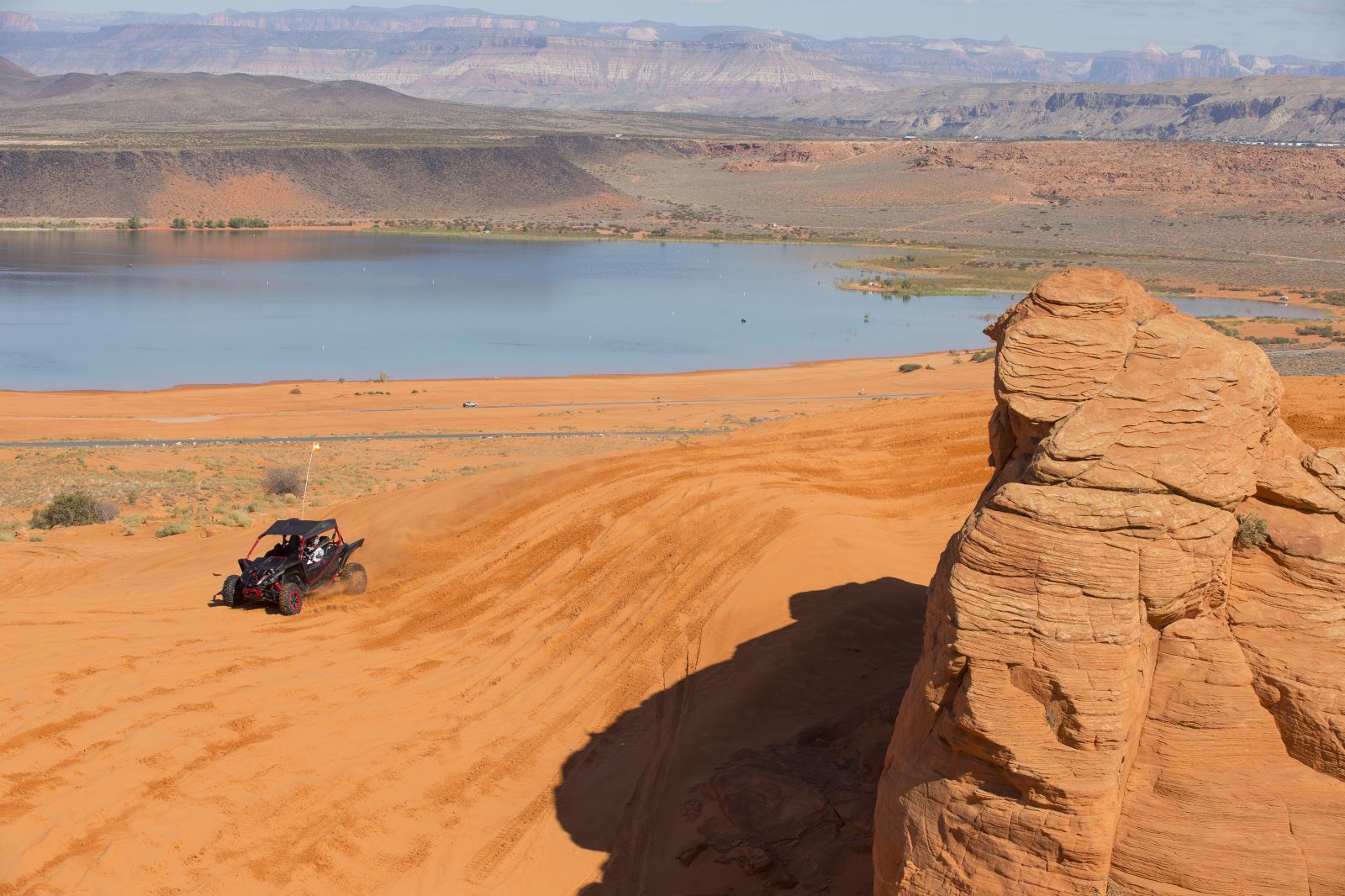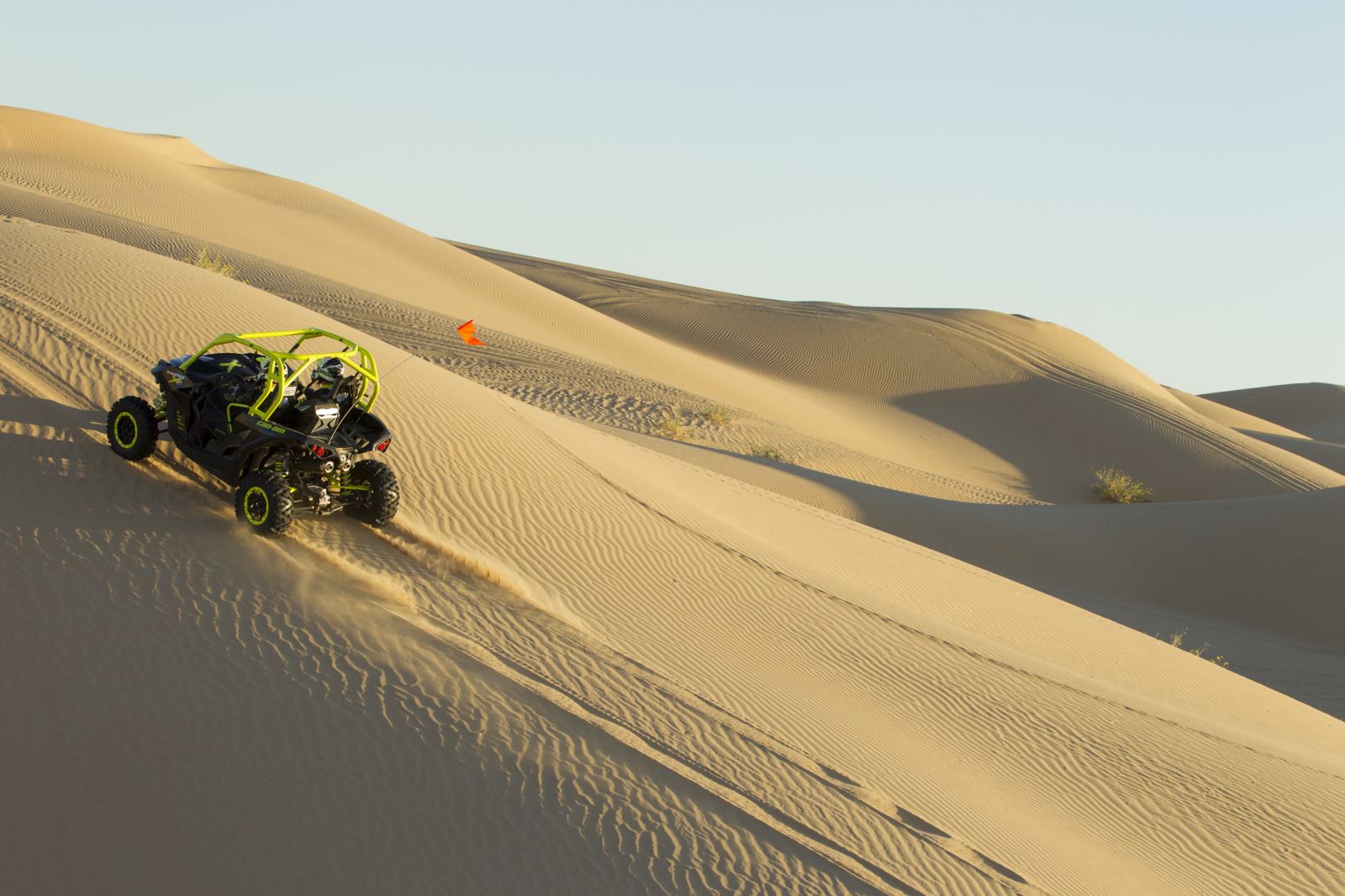
Keep Track Of Your Fellow Riders
This part goes hand-in-hand with the previous section and it’s a rule of ours whenever we go out on a ride. While it’s important to follow the same lines as the group leader, it’s also important to be sure everyone is accounted for and the group doesn’t lose anyone. This is usually best achieved by the leader knowing who is directly behind him. The rider behind the leader does the same and so on. If the person directly behind you is your responsibility, then no one gets left behind if his ATV stalls or if he just can’t keep up.
If you find yourself suddenly separated from your group (and this can be a bit scary for a “newbie”), the best thing to do is to sit at the top of the nearest dune where it is easiest for your group to spot you—and wait. You will be missed, and they will come back for you—if you are riding around trying to find them, you could wander far out of their search radius and it could make it almost impossible for them to find you. Staying put and staying easily visible allows your group to find you much more quickly.

Always Expect The Unexpected
This is a key safety tip for a safe trip to the dunes as the dunes can change considerably from day to day, depending on the weather. If the wind blows, it can change the direction of the steep and sloped faces of the dunes as well as create large holes and drop-offs that appear when you least expect them.
If the dunes weren’t unpredictable enough, you also have to watch out for other duners. It is very easy to crest a dune and find yourself face to face with a sand rail or quad that is coming up from the other direction, so if you are always vigilant and paying attention, you can react quickly and make good decisions while still having a fun and fast ride through the dunes.

Point It Down
Many new duners are not sure what to do if they find themselves sideways on a hill and losing momentum or climbing a hill and afraid they won’t make it. The best advice we give new duners is to “point it down” and try again.
Unless you are an experienced rider, traversing a dune sideways can often wind up in a rollover situation. The safest way to get off of a dune is to point your front wheels down, shift into your lowest gear and make your way down at a controlled rate of speed. Whether you are on a quad or in a UTV, being pointed straight up or straight down is always better than sitting sideways on a dune.
If you are trying to climb a hill and feel that you won’t make it to the top, it’s important to turn back downhill while you still have enough momentum and power to make the turn. If you find yourself stuck on a hill (and we have all found ourselves in this situation), remember that the safest way down is straight down. If you are on a quad without reverse, then put on the parking brake, get off on the uphill side if you can and pull your front end around until it points down. Let off the parking brake once you are seated again and ride back down to the bottom. If you are in a UTV, the safest way to get unstuck is to put your UTV in reverse and back straight down, slowly, without locking up the brakes and getting sideways.
Once back down, you can always give it another try with a bit more speed and some helpful advice from your friends. Watch out though, as climbing those hills can become quite addicting.
There are plenty of other things to learn about riding in the dunes and chances are you will learn something new every time you embark on a trip. Dune riding is truly one of the most unique experiences on the planet and these tips are a very basic starting point to help you have a fun and safe experience.
Hopefully, you will enjoy your time there as much as we do.

